Sweden isn’t just some tiny nation in the northern reaches of Europe. Geographically speaking, it’s huge: the distance between Sweden’s southern tip and Lapland’s far north is longer than the distance between London and Rome.
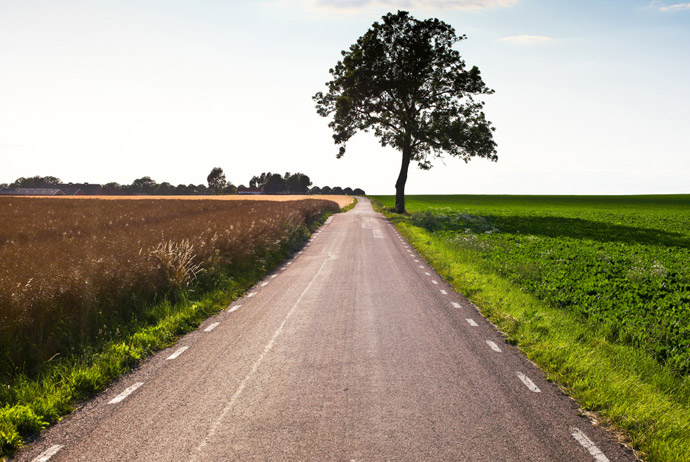
 Pic: Håkan Dahlström (CC)
Pic: Håkan Dahlström (CC)
What to expect
Sweden is BIG, with wild and diverse landscapes that take in everything from rolling green countryside to dense forests, sprawling river valleys and frozen glaciers.
Despite this, most tourists (and indeed most Swedes) spend their time in the southern third of the country, which is home to the three largest cities.
Stockholm is perhaps Europe’s prettiest capital city, spread across a series of low islands and with an enviable location between the Baltic Sea and Lake Mälaren.
Gothenburg, over on the west coast, is a less showy alternative with an exciting cultural scene and some of the freshest seafood you’ll ever catch sight of.
Both of these big cities have unspoilt archipelagos in their backyards, with sleepy islands – many of them car-free – providing a slow-paced alternative to life in the city.
Malmö, Sweden’s third-largest city, is proudly the most diverse place in the country, with an arty vibe and plenty of cool parks, shops and museums.
Nearby Lund, a pretty, low-key city with its roots in the Viking Age, is also worth a look around. Thanks to its rich history and a lively student population, it has more to offer than many Nordic cities double the size.
Other places worth visiting in the south of Sweden include Uppsala, a cathedral city with botanical gardens and ancient burial mounds, and Sigtuna, widely thought to be Sweden’s oldest town. Its medieval centre is a charming spot for shopping and slurping coffee.
Beyond the built-up areas, rural Sweden shines. Southern areas such as Skåne are home to fields of cornflowers and poppies, while in central parts of the country shimmering lakes abound.
Even for Swedes who have grown up around these landscapes, areas like Dalarna still hold a magical appeal – it’s not unusual for wealthy Stockholmers to have a cute red cottage in rural Sweden, which they make use of during the long summer break.
Further north you’ll find some of Sweden’s most spectacular national parks including Sarek, home to almost 100 glaciers, and Padjelanta, where you’ll spot countless wild reindeer.
Settlements in and around the Arctic Circle are small, fascinating… and invariably freezing. Try Abisko, one of the best spots on Earth for watching the northern lights, or Kiruna, a mining community that’s being rebuilt in the face of an existential crisis.
You won’t be able to squeeze everything that Sweden has to offer into a single trip, but by prioritising a few main areas you’ll be able to get a good feel for the country’s many sides in a couple of short weeks.
Need help deciding? We’ve been writing about Sweden for more than 15 years, and we think these are the best places to visit:
Stockholm
Gothenburg
Malmö
Gotland
The Far North
Österlen
Lund
Dalarna
Luleå
The Bohuslän coast
Ystad
Jokkmokk
Kiruna
Stockholm
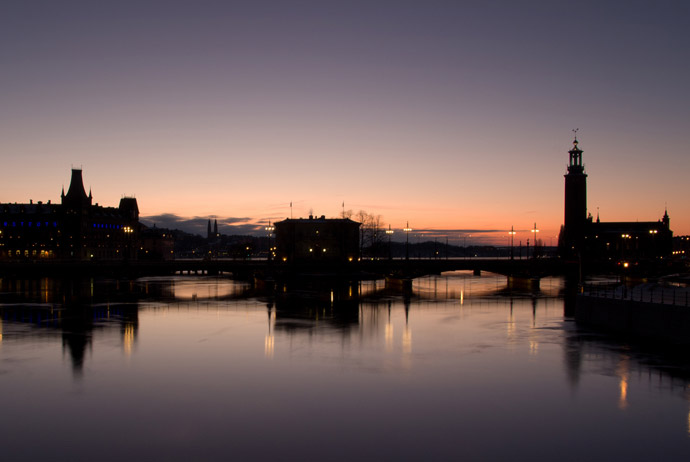
 Pic: Don McCullough (CC)
Pic: Don McCullough (CC)
Most visits to Sweden begin in Stockholm, and for very good reason. This is a beautiful, waterside city that will have you staring slack-jawed at skylines full of spires.
Even if you’re not a photography buff, we can guarantee that you’ll end up reaching for your camera over and over again.
You could easily spend a week or more checking out Stockholm’s many museums and boat trips, but there’s a lot to be said for just wandering around and getting a feel for the city’s rich history, as well as its famously cool shops, restaurants and bars.
The best way to get to know the old town well is to take a walking tour with a guide who knows all the insider knowledge and the best places to visit. There are also some seriously unusual places to stay.
It’s true: a trip to the Swedish capital can work out to be pretty expensive. But as we’ve already proved, you can spend two full days there for less than £80 – that’s around $120.
The city is also overflowing with free things to do. Let Stockholm take up a few days of your life and you’ll probably fall in love.
5 things not to miss in Stockholm
Gawp at the majestic 17th-century warship Vasa, which spent 333 years under water before being turned into Stockholm’s premier tourist attraction.
Get lost among the narrow lanes of Gamla Stan, and then take a wander through the subterranean Medieval Museum or the opulent Royal Palace.
Spend a night in one of the city’s kooky hotels or hostels – there’s an elegant sailing ship, an old prison and even a converted Boeing 747.
Go bar-hopping with designers, musicians and fashionistas in SoFo, the city’s coolest neighbourhood, or hit Stockholm’s markets and food carts for some of the tastiest cheap eats in Sweden, including classics like meatballs and Baltic herring.
Kick back in one of Stockholm’s neatly preened parks, or head out into the archipelago for a spot of sailing or wild swimming.
Gothenburg
Sweden’s second-biggest city serves as a nice counterpoint to the glitz and glamour of the capital.
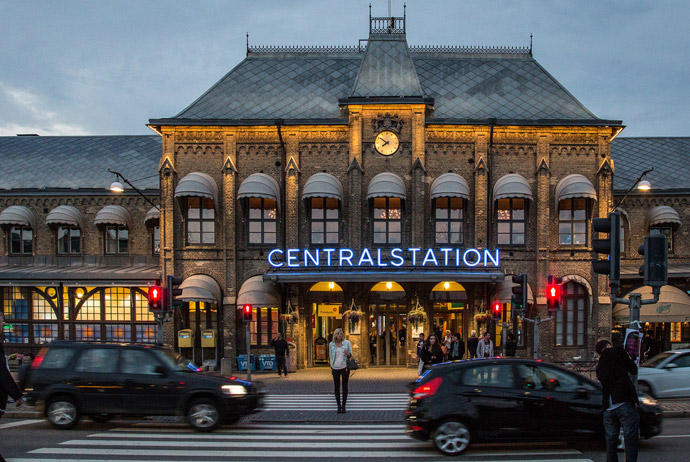
 Pic: Tony Webster (CC)
Pic: Tony Webster (CC)
The locals are more laid back, for one thing, and it’s also cheaper and easier to explore than Stockholm, where high prices are a part of everyday life.
That’s not to say that Gothenburg isn’t glamorous in its own way: go beyond the ugly port’s tall cranes and shipping containers and you’ll find beautiful parks and gardens, as well as serene, car-free islands that harbour sleepy swimming spots.
Taking a boat cruise round the islands of the archipelago is one of our favourite things to do in Gothenburg.
For more about the Gothenburg archipelago, check out our guide to the best islands to visit.
There are other reasons for visiting the west coast’s main city. The wide streets are bursting with things to do in the summer or winter, from galleries and stately homes to whacky museums that really must be seen to be believed.
These days, Gothenburg is also home to some of Scandinavia’s best bars and restaurants. Period.
Add in the creative music and fashion industries, a bubbly local craft beer scene and a few hair-raising rollercoasters, and it’s easy to see why Gothenburg is one of the best places to visit in Sweden.
5 things not to miss in Gothenburg
See the world’s only stuffed blue whale at the quirky natural history museum, then either ogle at some of the other oddball exhibits or chill out in Slottsskogen, Gothenburg’s best park.
Top your caffeine levels up in the showpiece neighbourhood of Haga, home to cute wood-and-stone houses and some of the cosiest cafes you could ever hope to fika in.
Get white knuckles at Liseberg, Scandinavia’s biggest and best theme park. Try rickety Balder, a nerve-jangling wooden coaster, or get a 360-degree view of the city from the aptly named Atmosfear ride – it’s 116 metres high. The Gothia Towers hotel has views over the theme park.
Discover West Sweden’s rural charms on a road trip into the countryside. With old-fashioned petrol stations and American-style diners to stop at along the way, the intriguing retro road is well worth following.
Chomp your way through mounds of freshly caught prawns, crayfish and lobster at one of the city’s amazing seafood restaurants.
Malmö
A former fishing town, Malmö is now Sweden’s third largest city and the country’s most cosmopolitan and culturally diverse community.
Its cobbled old town square was once Europe’s largest market square, and the city is still known today for its lively shops, restaurants, cafés and bars. In 2024, it got a taste of international fame as the host city for the Eurovision Song Contest.
If you want to stay, we like the eco-friendly More Hotel Mazetti with comfortable self-catering studios in a converted former chocolate factory.
For more on what to do in Malmö on a budget, see our guide to 22 free things to do in Malmö.
5 things not to miss in Malmö
Check out the Turning Torso. Malmö is home to the striking Turning Torso, Scandinavia’s highest skyscraper, designed by top architect Santiago Calatrava.
See the city’s sights on a fun canal boat trip.
Take a day-trip to Denmark. Cross the famous Øresund Bridge and spend the day in Copenhagen, just a short train or bus trip away.
Explore the city by bike. Malmö is well set up for cyclists, so rent a bike and travel around like the locals do.
Visit the Disgusting Food Museum. Sample Surströmming – the world’s stinkiest food – and see fermented shark and dried insects at this quirky, fun and frankly quite disgusting museum!
Gotland
For many Swedes summer means a trip to Gotland, Sweden’s biggest island. Marooned in the Baltic, it’s a laid-back haven with some of the country’s best weather, not to mention stunning sandy beaches, and thick forests that seem to have been made for hiking and biking.
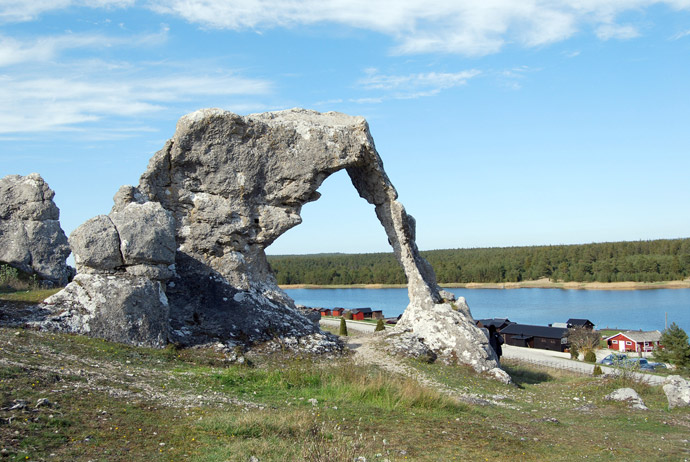
 Pic: Geological Survey of Sweden (CC)
Pic: Geological Survey of Sweden (CC)
Given its strategic location, it’s not surprising that Gotland has a long and turbulent history. The medieval town of Visby, the island’s main settlement, is like something straight out of Game of Thrones, and items from the Viking Age are regularly dug up across the island.
A fun way to see Visby and learn all about its history is on a hop-on, hop-off open-top bus tour.
Today Gotland also hosts Sweden’s biggest political event, Almedalsveckan, as well as a weeklong medieval festival.
What else makes Gotland one of the best places to go in Sweden? Oh, just the mesmerising freshwater lakes, the weird stone formations, the deep caves, the dingy bars and the oh-so handsome gardens…
5 things not to miss in Gotland
Head underground at Lummelundagrottan, a vast cave discovered by three teenage boys in 1948. When you’re done with admiring the stalactites and stalagmites, explore the nature trails that start near the cave’s entrance.
Unleash your inner knight at Visby’s medieval week (Medeltidsveckan), which takes place in August. Expect jousting, concerts and lot of people in silly costumes.
Wake up to spectacular sea views when camping at Visby Strandby, just outside the old city walls. Or, for more comfort, we love the Donners Hotel within the medieval town walls in the heart of the UNESCO Heritage city.
Head to the neighbouring (and much smaller) island of Fårö, once home to Swedish director Ingmar Bergman, and marvel at the eerie, wave-gnarled sea stacks at Långhammars.
Hire a bike and discover out-of-the-way cafés and swimming holes, as well as farm shops selling local produce. Gotlandsleden, one of many well-pedalled routes, is a 500km epic that skirts the entire coastline.
The far north
Sweden’s far north is home to some of Europe’s most thrilling landscapes. In winter, great rivers and waterfalls freeze to a halt, and vast forests bend under the weight of too much snow.
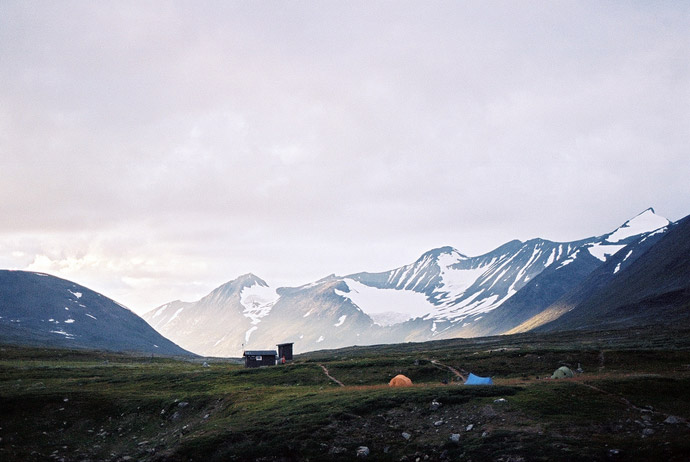
 Pic: Oskar Karlin (CC)
Pic: Oskar Karlin (CC)
When summer sun finally makes things melt, the whole region bursts into life – wild flowers bloom in the valleys, mosquitoes buzz through the air, and the weather can actually get quite warm.
Getting to Lapland takes some effort, but the rewards are easily worth it. The big draw for many is seeing the northern lights, which are (in theory, anyway) visible across the entire region.
Even without the lights, there are plenty of things to keep you busy. Go moose-spotting, try skiing under the midnight sun, or spend a night at the famous Icehotel in Jukkasjärvi.
This is also one of the best parts of Sweden for hiking, camping and wildlife spotting thanks to the abundance of wilderness areas.
5 things not to miss in northern Sweden
Tackle the epic Kungsleden hiking trail, which snakes through some of the country’s most magnificent mountain scenery. The entire route is a whopping 425km long, but signposts and simple cabins built for overnight stops make it possible to take on bite-sized sections. For more on this epic trail, read our guide to Hiking the Kungsleden.
See the northern lights. No matter how many pictures you’ve seen, nothing will provide you for seeing the aurora up close and personal. The area around Abisko is the ideal place to base yourself.
Drink beer as you roast yourself in a traditional wood-fired sauna, then dive into a lake or roll around in the snow – clothing optional. This is about as Swedish as it gets.
Try dog sledding. Snowmobiling is fun, but nothing beats the quiet serenity of whizzing over lakes on the back of a sleigh pulled by a pack of happy huskies.
Go wild. National parks like Abisko and Sarek are phenomenally beautiful wilderness areas, but you’ll need some serious outdoor knowledge (or a professional guide) to explore safely, especially in winter.
Österlen
Tucked away in the southeast corner of the country, the picturesque region known as Österlen is a long-standing favourite among holidaying Swedes. Somehow, though, it’s remained off the radar for international visitors.
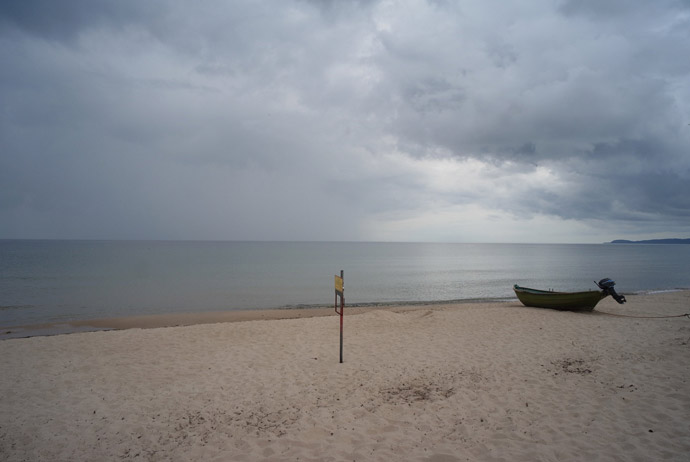
 Pic: Sigfrid Lundberg (CC)
Pic: Sigfrid Lundberg (CC)
Go in the summertime to browse the many small art galleries and farm shops that throw open their doors to visitors, or to sunbathe and swim at the pristine sandy beaches that skirt the Baltic coast.
The culinary scene in this part of Sweden is rapidly picking up pace, and you’ll find that even middle-of-nowhere hotels and restaurants are adept at turning seasonal, locally grown ingredients into kick-ass lunches and dinners.
Fishing is also a big deal, and locally caught sea trout often makes it onto menus.
5 things not to miss in Österlen
Visit some of the small, independent galleries run by local glassblowers, painters and sculptors. Some artists even open up their homes for visitors during events like Konstrundan, which takes place in the spring.
Go paddling at the marvellous sandy beach in Knäbäckshusen. On a sunny summer’s day it looks like it’s been imported straight from Thailand or the Philippines. For more on Sweden’s best beaches, click here.
Drop by one of the roadside farm shops for locally grown asparagus, apples and wild strawberries, or whatever else is in season when you visit.
Visit Glimmingehus, the best-preserved medieval manor house in all of Scandinavia.
Check into a spa hotel for some pampering. Kiviks Hotell has lovely sea views, as well as hot tubs, saunas and massage rooms.
Lund
Lund often gets overlooked as tourists rush through southern Sweden on their way to or from Copenhagen.
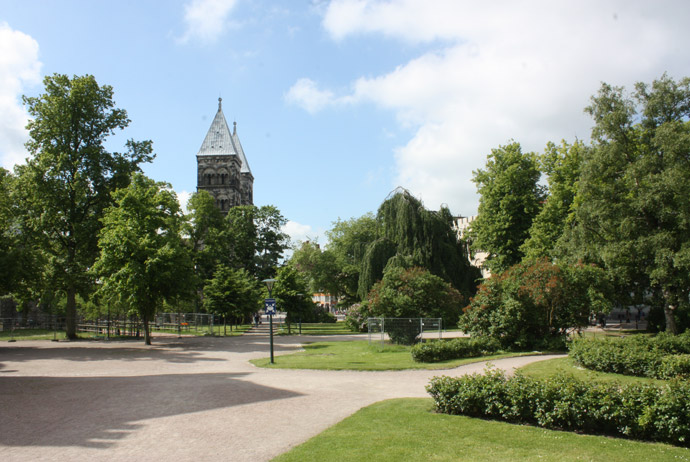

But this seriously ancient city has been around since the time of the Vikings, and is one of the best places to visit if you want to get your head around the entire region’s history.
The central part of Lund is full of handsome (and sometimes very wonky) buildings, and there are museums covering everything from old rune stones and weapons to quirky modern art.
This self-guided walking tour explores the city’s history and takes you round the main sights, with a real-life historical murder mystery to solve too.
Or, rent a bike for a ride through the cobbled streets and pretty parks and you’ll soon soak up lots of sights.
The local uni is a bit like a Swedish version of Oxford, and it helps to keep the average age of the citizens here quite low. Happily, there are a correspondingly high number of bars and pubs.
And you don’t have to spend a fortune to have fun in Lund: here are some ideas for free things to do in Lund.
5 things not to miss in Lund
Try cycling your way along an old railway line on one of these bizarre bike–train contraptions. The scenery is lovely.
Admire Lund’s grand cathedral and the gloomy crypt beneath it, and then chill out in the surrounding parkland. Across town, a separate and now ruined church is completely underground.
Check out the weird and wonderful objects kept in the ‘curiosity room’ at Lund’s history museum, including Egyptian gems and a bunch of tools from the South Pacific.
Fika (drink coffee and natter with friends) at one of Lund’s cool cafés, many of which are housed in historic buildings.
Get a masterclass in modern art at the splendid Museum of Sketches.
Dalarna
Red cottages, blue lakes, and verdant pine forests: if you want a glimpse of the ‘real’ Sweden, the central province of Dalarna should be high on your list of places to visit.
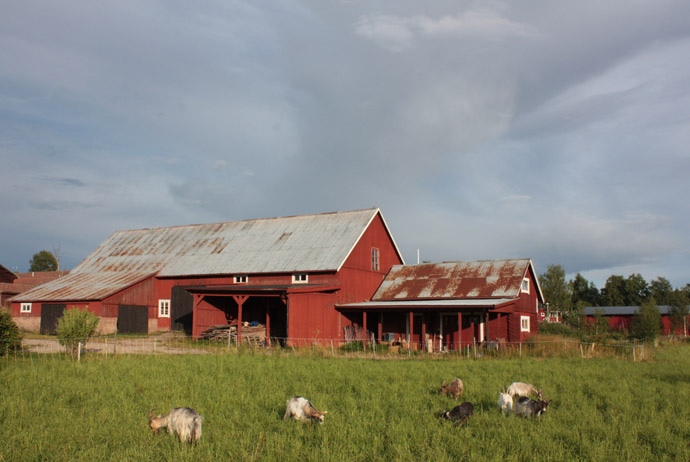

Nowhere else in the country matches it for picture-postcard beauty, and during the summer it’s a favourite holiday retreat for Swedes, who come for a bit of swimming, camping and sightseeing.
The best base for exploring Dalarna is Siljan – a vast blue lake edged by laid-back towns such as Mora, Rättvik and Leksand. Most have beaches, waterfront restaurants and campsites where you can hire kayaks for splashing around on the lake.
We like the Nås Camping Dalarna with tent pitches and pretty wooden cottages to rent, by the river Västerdalälven.
There are lots of other things to do in the area including a bear park (this area is home to many of Sweden’s brown bears) and a bunch of museums, some showcasing the work of local artists.
If you want to know about the region’s iconic red houses, read our guide to Where Sweden’s cottages get their colour.
5 things not to miss in Dalarna
Ride the scenic Inlandsbanan railway, which cuts through the very centre of Sweden, calling at Mora and Orsa.
Watch the frantic climax of the gruelling Vasaloppet ski competition, which finishes in Mora. Taking place annually on the first Sunday in March and covering an incredible 90km, it’s the world’s longest race for skiers.
Witness rural Sweden’s obsession with 1950s American culture at Rättvik’s Classic Car Week, when hundreds of old Cadillacs and Mustangs take to the streets.
Swim, sail or kayak on Lake Siljan, then spend lazy summer nights barbecuing by the shoreline.
Head to Zornmuseet to see works by Swedish artist Anders Zorn, who was born in Mora and spent a lot of time painting pictures of lakes and naked ladies.
Luleå
The north’s coolest city is fast becoming a hub for technology and culture, with a disproportionate number of galleries and design shops.
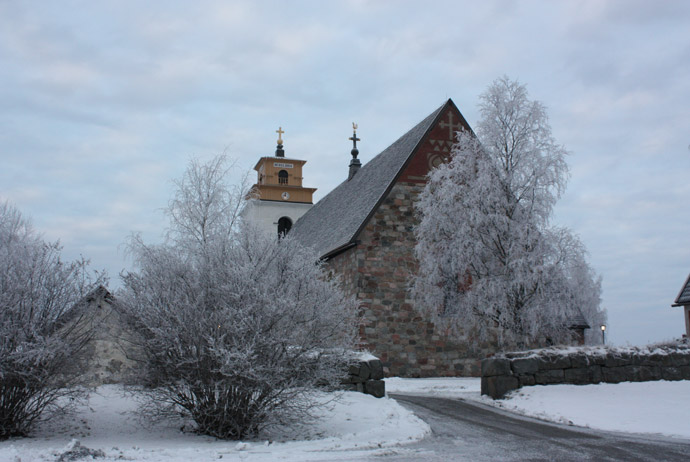

Facebook has a data centre in Luleå, which has helped to give the place a cosmopolitan feel – well, for northern Sweden, anyway – and there are also some decent dining options.
If you have time left over after exploring Luleå itself, there are a few great little day trips nearby.
5 things not to miss in Luleå
Explore the Unesco-listed church town, where the cute streets are lined with wooden cottages.
Go sailing, kayaking or kite surfing in the vast archipelago, which is home to more than 1300 islands.
Learn about life in the north (and grab cup of good coffee) at Norrbottens Museum.
Head to the free exhibitions at Kulturens Hus to check out works by hotly tipped Swedish artists and designers.
Treat yourself to a night at Clarion Sense, one of the region’s flashiest hotels – or just grab a cocktail in its panoramic ‘sky bar’.
The Bohuslän coast
The stretch of coast from Gothenburg north up to the Norwegian border is dotted with almost 8000 islands, countless coves, beaches and pretty fishing villages.
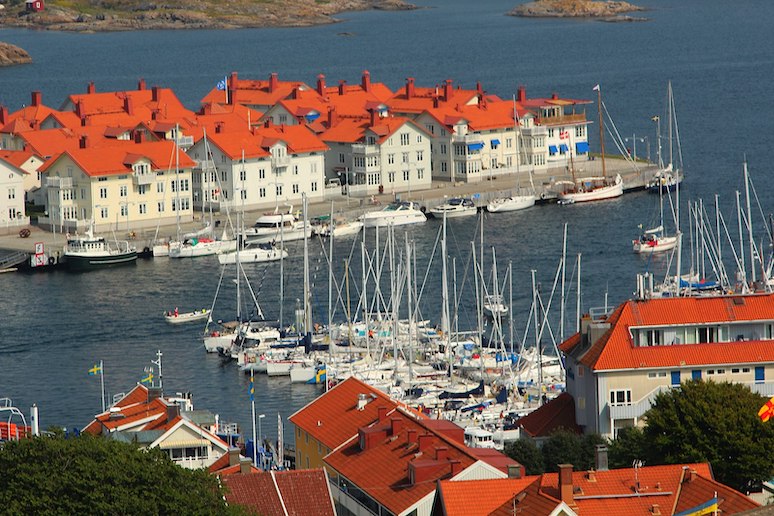
 Marstrand (CC)
Marstrand (CC)
Running around 280 kilometres up Sweden’s western side, the Bohuslän coast is a rugged picturesque stretch of seashore
that is popular with Swedish holidaymakers but little-known outside the country.
Fishing, sailing, swimming, kayaking and walking are all popular activities here, and it’s easy to see why Swedes head her over the summer months.
Connected to the mainland by bridges, the island of Marstrand is a former fishing community that is now frequented by sailors and makes a great base from which to explore this coastline.
Its main town, also called Marstrand, has pretty cobbled streets, a lively harbour front and a 300-year-old castle, now a B&B that you can stay in.
Along the coast, Sweden’s third largest island Orust is a perfect place for walking, cycling, sailing, kayaking and even having a dip at one of its secluded swimming spots.
North of here, Fjällbacka is the location of the best-selling, atmospheric Fjällbacka series of crime novels and birthplace of their author, crime writer Camilla Läckberg. If you want to stay we suggest the Bryggan Fjällbacka, overlooking the waterfront.
For more on the Bohuslän coast, see our guide to the best places to visit on Sweden’s west coast.
5 things not to miss on the Bohuslän coast
Kayak around Sweden’s oldest national marine park, Kosterhavets. Take a guided tour or rent your kayak and paddle round the offshore islands, remote beaches and waterways of the national park.
Explore Fiskebackskil, one of the Bohuslän coast’s prettiest villages on the island of Skaftö. We think the Slippens Hotel by the harbour makes a great base from which to explore the island’s beaches and walking trails or to take a boat trip.
Eat seafood in Strömstad. Up near the Norwegian border, Strömstad is Sweden’s seafood capital with plenty of restaurants serving lobster, crab, crayfish and langoustine straight from the sea.
Take a boat trip out to the deserted Väderöarna Islands, Sweden’s westernmost island group – look out for seals on the way.
Walk or cycle the long-distance Kustigen coastal path, that runs the length of Sweden’s west coast and takes in the beautiful Bohuslän coast.
Ystad
One of Sweden’s most southerly towns, Ystad is a pretty, well-preserved place with cobbled streets and brightly coloured timbered houses.
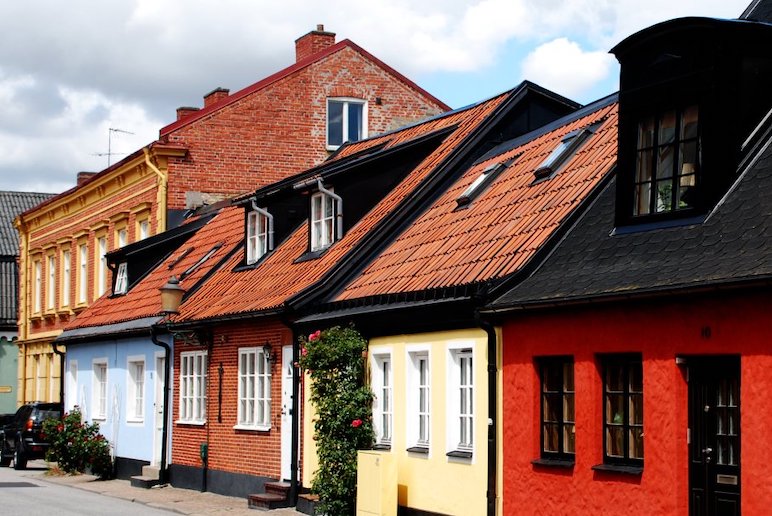
 Flöschen (CC)
Flöschen (CC)
This medieval town lies on Sweden’s south coast, surrounded by sandy beaches and the flat, brooding landscapes of Skåne county.
We love its picturesque main square, and the maze of cobbled streets that wind around it lined with tiny medieval cottages.
Ystad is also a port town with regular ferry connections to Poland and to the Danish island of Bornholm.
But probably the Ystad’s main claim-to-fame is as the home of troubled detective Wallendar in the highly successful books by Henning Mankell, films and TV series.
5 things not to miss in Ystad
Stay in Wallender’s police station. Previously the town’s train station, the comfortable and stylishly converted Station B&B, is the building that was used as location for the police station in the Wallander TV series.
Chill on the beach. The town beach is a long stretch of white sand that runs east for 4km and is backed by a nature reserve.
Cycle to the enigmatic monoliths of Ales Stenar. This guided bike tour takes you through pretty countryside to see the ancient stones, which were Wallender’s favourite place of contemplation.
Take a day-tip to Denmark. The pretty island of Bornholm is just 1hr and 20 minutes away by high-speed ferry, and is known for its tasty fish and local cuisine.
Channel your inner detective. A fun way to explore the town is with this self-guided Wallandar walking tour. Solve clues to the murder mystery, while visiting and learning about the town’s sights on the way.
Jokkmokk
Just inside the Arctic Circle, the town of Jokkmokk is the centre of the Sami community in Swedish Lapland.
For more than 400 years, Sami people have met here every February for the annual Jokkmokk market.
Originally, the Sami came here to trade and meet their kin, but today it’s also a celebration of the colourful Sami culture, food and traditions.
Even, outside of market time, look out for Sami people dressed in their brightly-coloured traditional clothing in town. If you want to stay, we love the Peace and Quiet Hotel, where you can sleep in a floating glass-roofed room on the lake.
5 things not to miss in Jokkmokk
Watch the reindeer races over a frozen lake during the annual Jokkmokk Great Winter market (one of Sweden’s oldest markets) in February.
Buy Sami handicrafts. Jokkmokk is a great place to get authentic Sami arts and crafts: read Shopping in Jokkmokk for our favourite places to buy Sami souvenirs.
Learn about the Sami culture and traditions at Ajtte. We love this informative museum that tells the story behind the region’s indigenous people and their land.
See the midnight sun. Since Jokkmokk is just north of the Arctic Circle, it’s possible to see the midnight sun for 32 days of the year (from early June to early July).
Take the Inlandsbanen. In summer the scenic inlandsbanan train runs all the way along the length of Sweden from Kristinehamn in the south up to Gällivare in the north, stopping at Jokkmokk en route.
Kiruna
It may not be the most picturesque town in Northern Sweden, but the mining town of Kiruna makes a great jumping-off point for winter sports, exploring rural Lapland and getting out into the wilderness of northern Sweden.
It’s also fascinating because the town is currently being moved building by building some three kilometres to the east due to massive subsidence cause by the iron ore mining industry.
If you want to stay, we suggest Camp Ripan just outside town with cabins in the woods, an outdoor hot tub and spa.
5 things not to miss in Kiruna
Whatever you may think about the ethics of the mining industry, there’s no denying that this is a mega feat of engineering.
Need more tips? Check out our destination pages!


